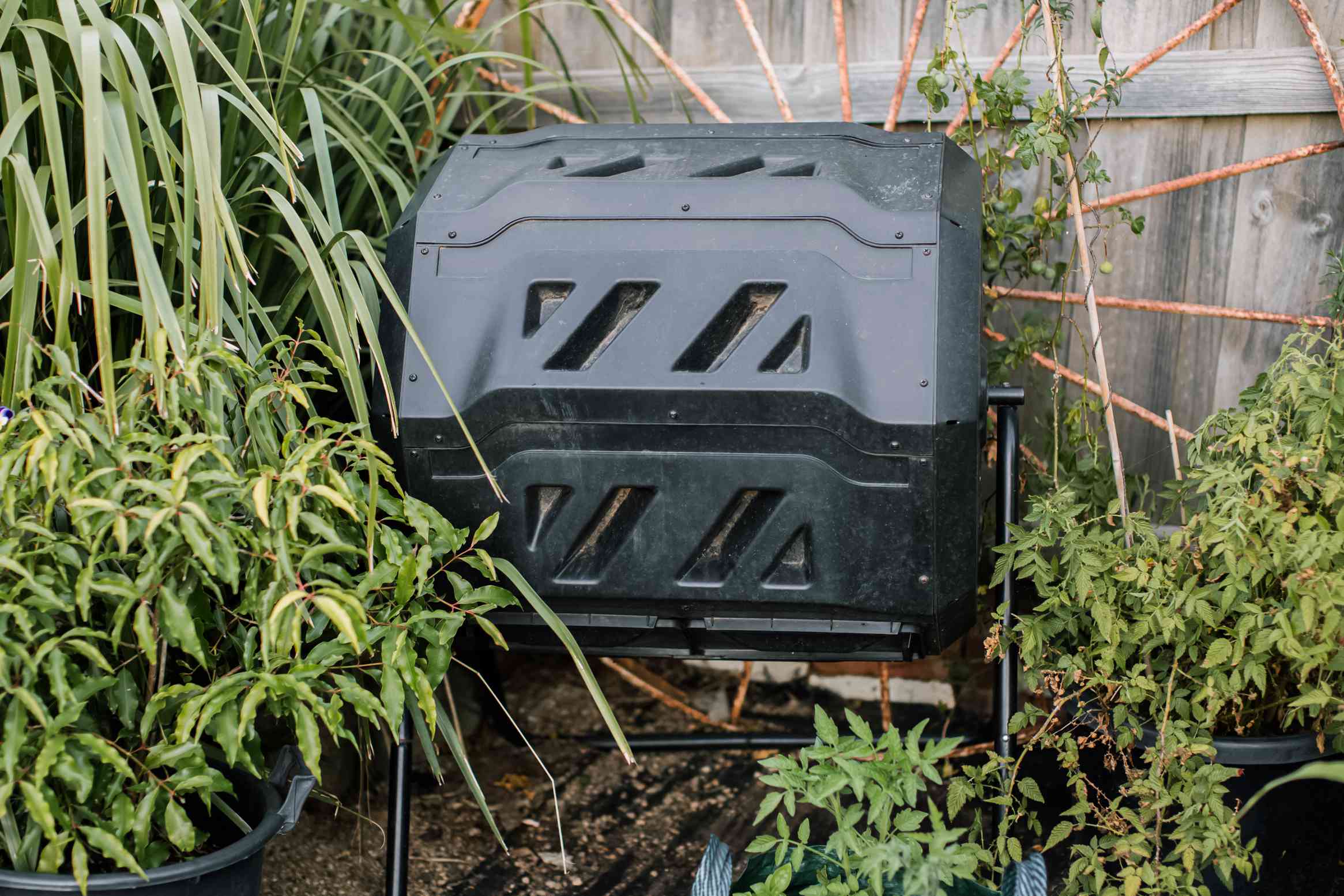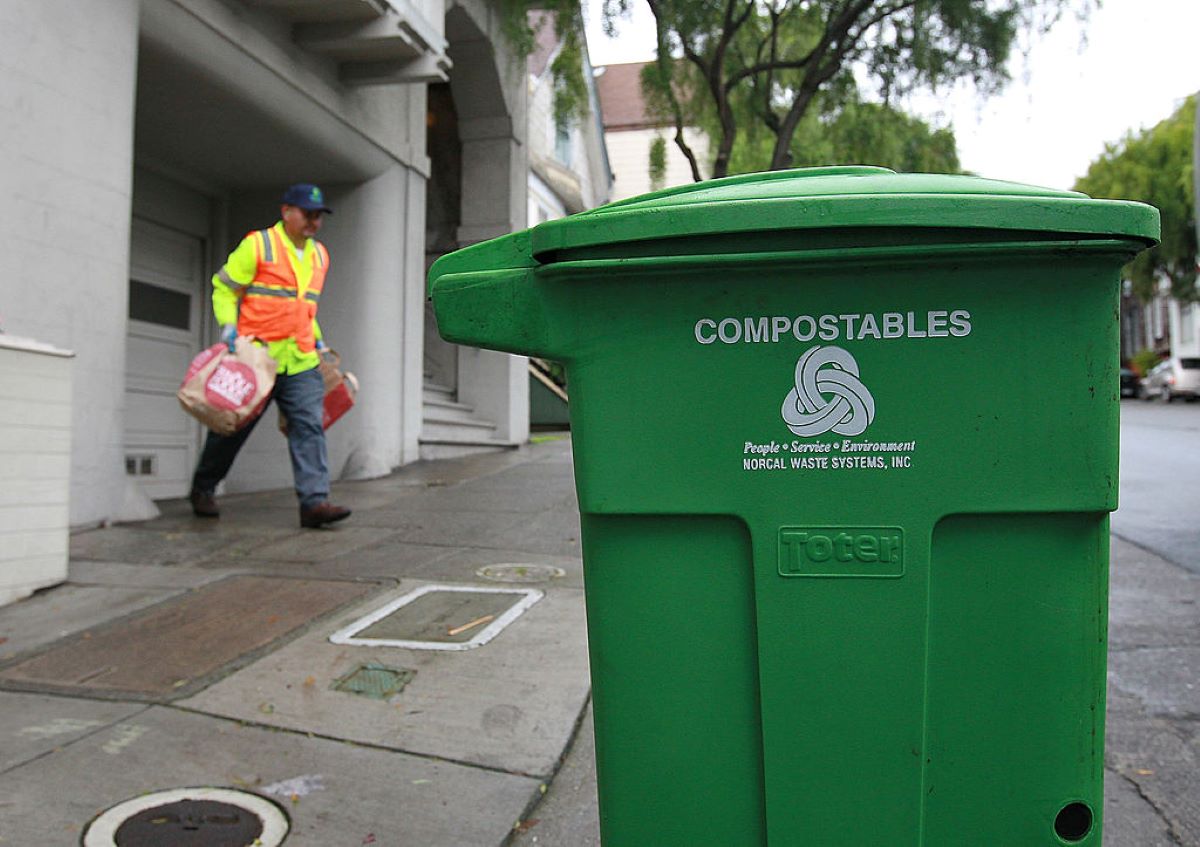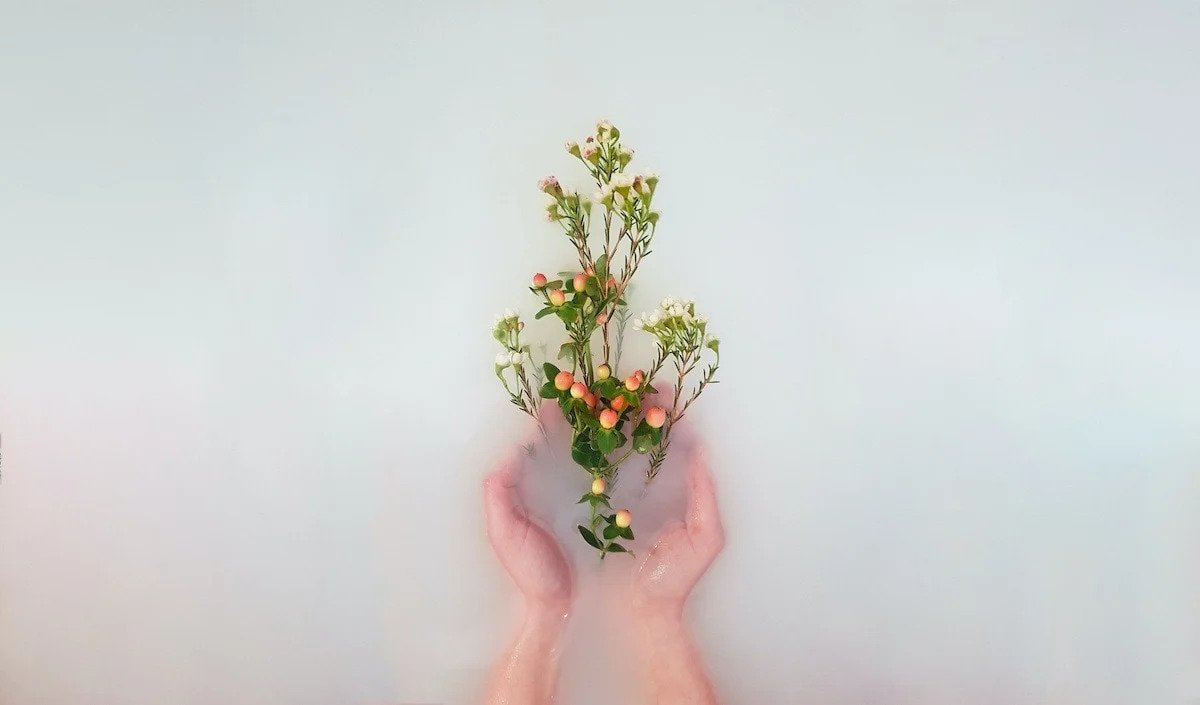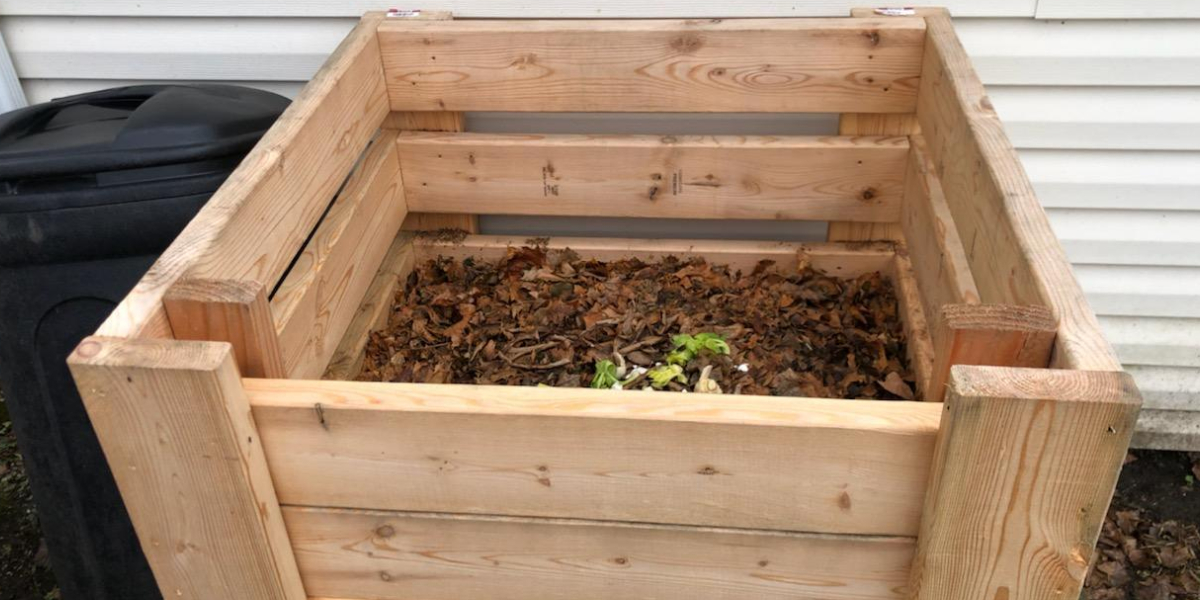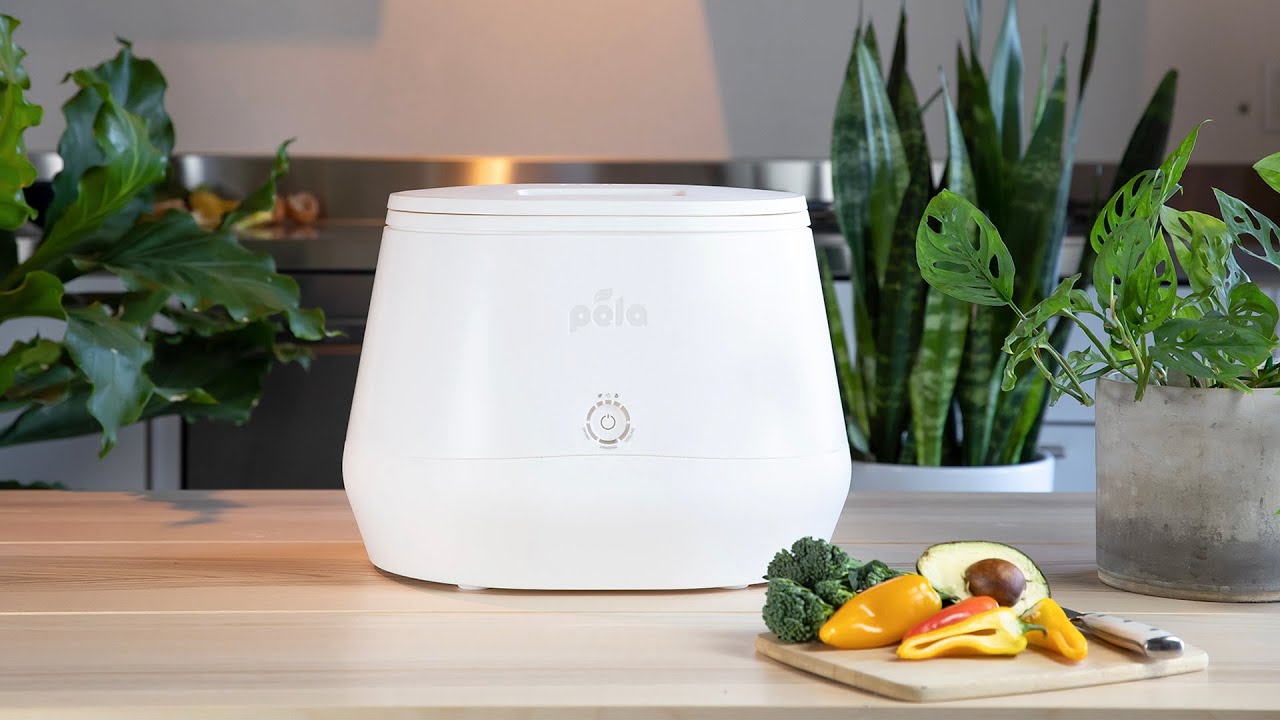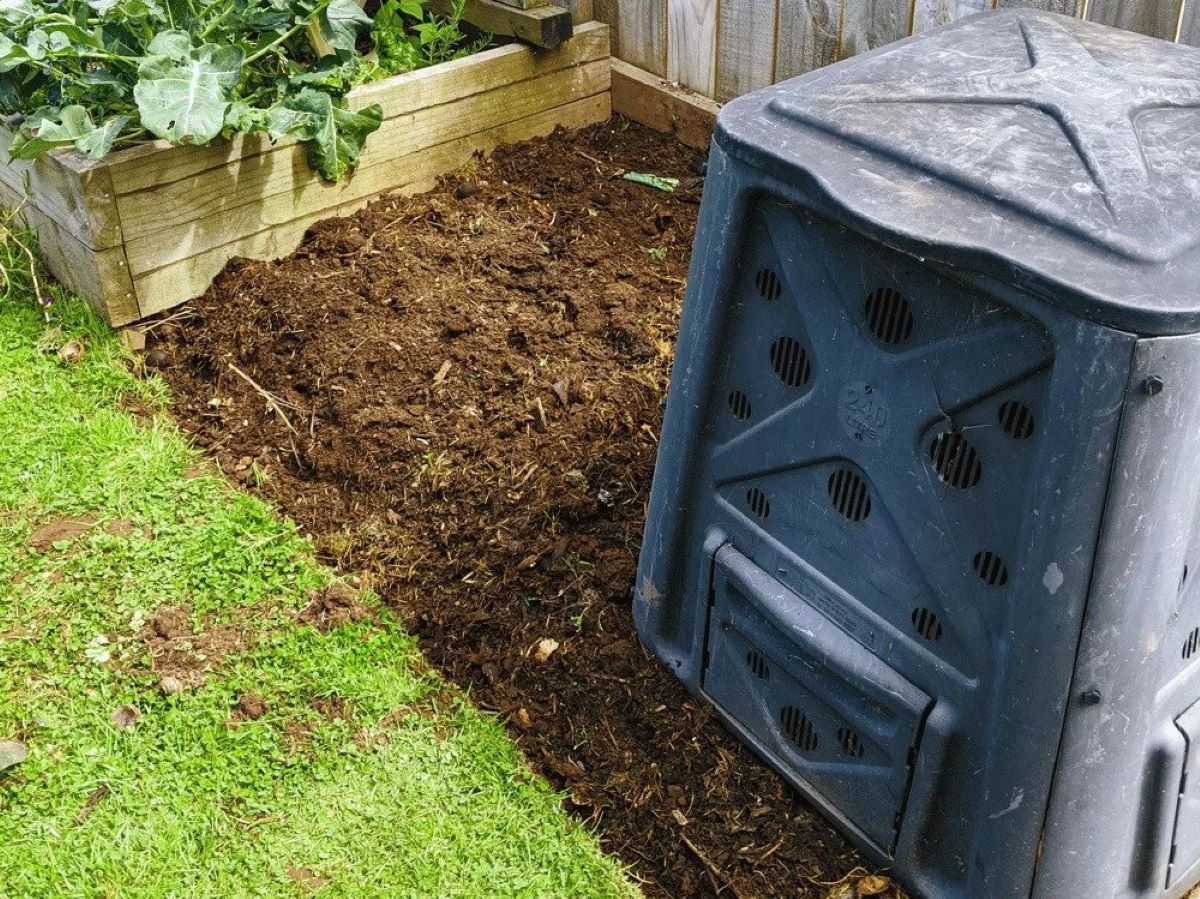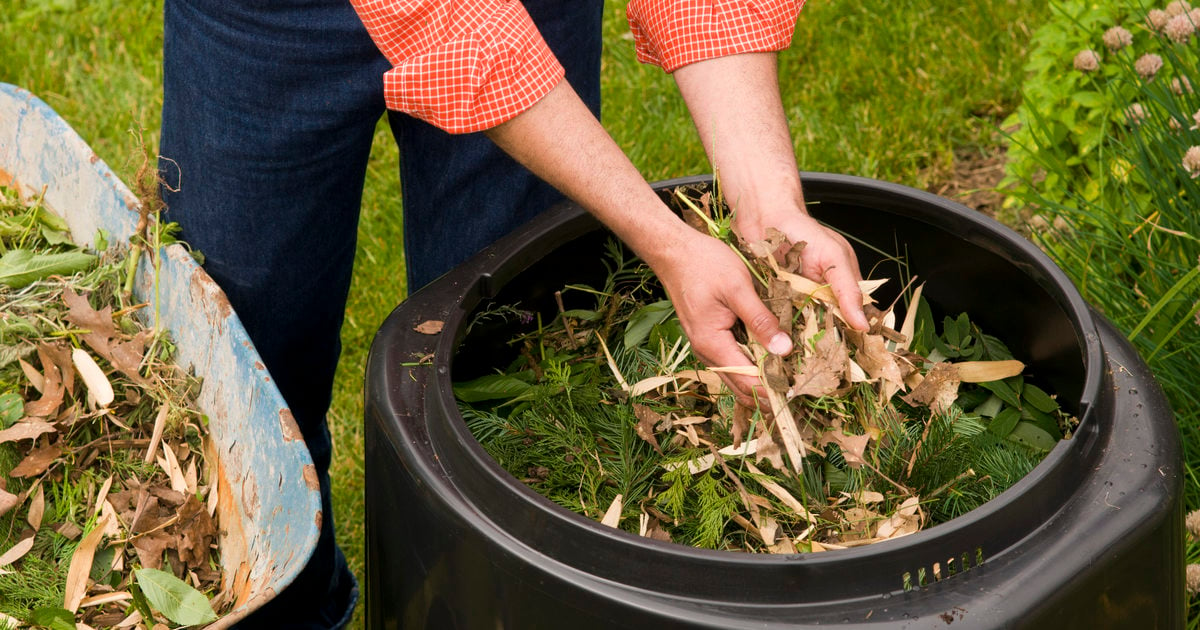Home>Gardening Tips and Tricks>Eco-Friendly Gardening>What Can Be Put In Compost Bin
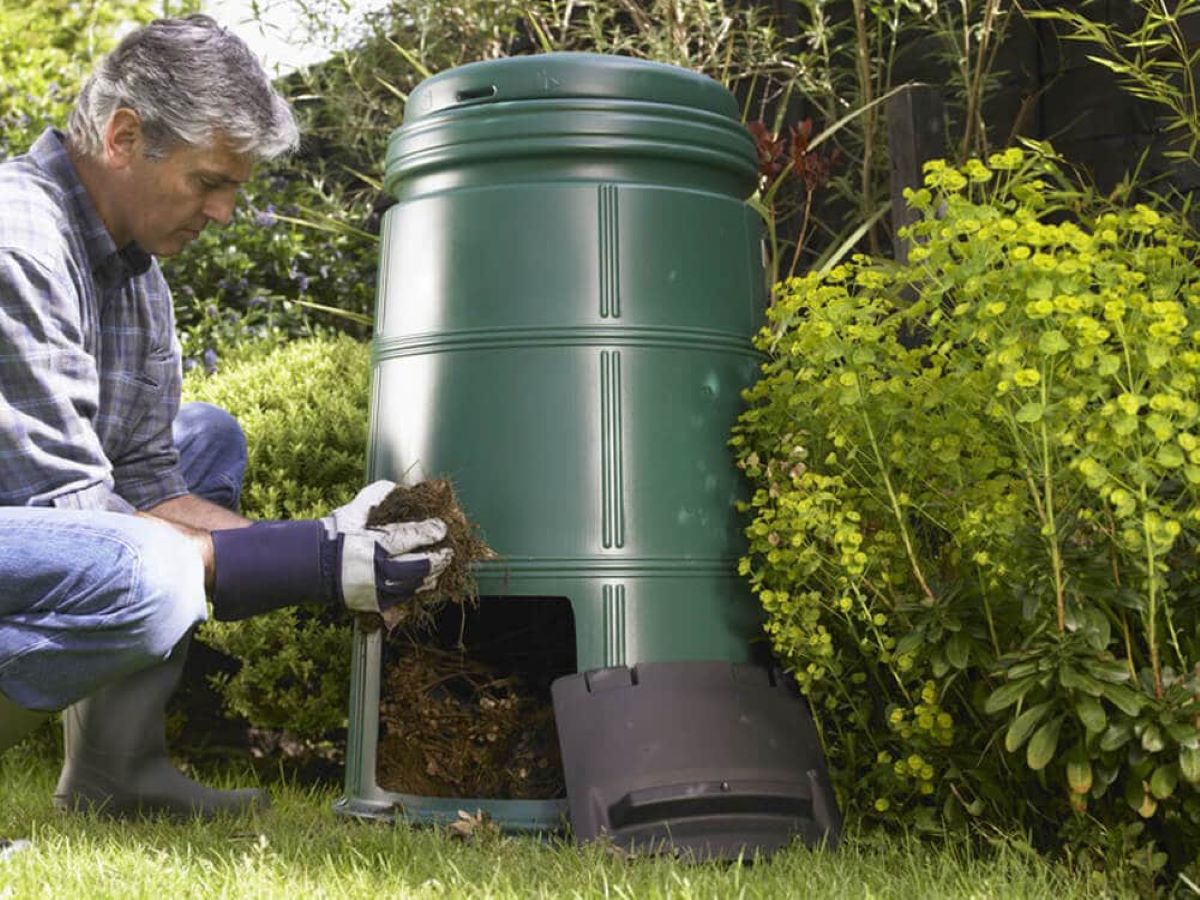

Eco-Friendly Gardening
What Can Be Put In Compost Bin
Modified: January 22, 2024
Discover eco-friendly gardening tips and learn what can be put in a compost bin to create nutrient-rich soil for your plants. Improve your garden's sustainability today!
(Many of the links in this article redirect to a specific reviewed product. Your purchase of these products through affiliate links helps to generate commission for Chicagolandgardening.com, at no extra cost. Learn more)
Table of Contents
- Introduction
- Why Composting is Important
- What Can Be Put in a Compost Bin
- Fruit and Vegetable Scraps
- Coffee Grounds and Filters
- Tea Bags and Leaves
- Eggshells
- Yard Waste (Grass Clippings, Leaves, Trimmings)
- Shredded Paper and Cardboard
- Nut Shells
- Hay and Straw
- Flowers and Houseplants
- Sawdust and Wood Chips (Untreated)
- Hair and Fur
- What Should NOT be Put in a Compost Bin
- Conclusion
Introduction
Composting is an essential practice for those who are committed to eco-friendly gardening and reducing their environmental footprint. It involves the decomposition of organic materials, turning them into nutrient-rich soil amendments that can be used to nourish plants and promote healthy growth.
By diverting organic waste from landfills and using it to create compost, you not only contribute to waste reduction but also help combat climate change. When organic materials decompose in landfill sites, they release methane, a potent greenhouse gas. However, when these same materials are composted, they break down in an oxygen-rich environment, reducing the production of methane and instead creating a valuable resource for your garden.
In this article, we will explore the wide range of materials that can be put in a compost bin to create nutrient-rich compost. From kitchen scraps to yard waste, we will cover what can and should not be composted, providing you with the knowledge to effectively manage your composting efforts.
Why Composting is Important
Composting plays a crucial role in sustainable gardening practices and has numerous benefits for both the environment and your garden. Let’s explore why composting is important:
- Waste Reduction: Composting allows you to reduce the amount of organic waste that ends up in landfills. By diverting food scraps, yard waste, and other organic materials from the garbage, you can help decrease the generation of greenhouse gases and the potential for soil and water pollution.
- Soil Enrichment: Compost is often called “black gold” for a reason. The nutrient-rich organic matter produced through composting improves soil health and fertility. It enhances soil structure, promotes beneficial microorganisms, and increases the water-holding capacity of the soil. This means healthier plants, improved drainage, and reduced need for chemical fertilizers.
- Carbon Sequestration: Composting helps mitigate climate change by sequestering carbon. When organic materials decompose in a compost bin, they undergo a process called aerobic decomposition, which prevents the release of methane, a potent greenhouse gas. Instead, the carbon in the organic matter is converted into stable organic compounds, helping to reduce greenhouse gas emissions.
- Water Conservation: Compost improves soil structure, creating a habitat for beneficial microorganisms that enhance the soil’s capacity to retain water. This reduces water runoff and helps to conserve water, an increasingly precious resource.
- Cost Savings: By creating your own compost, you reduce the need to purchase expensive synthetic fertilizers and soil amendments. Compost is a cost-effective and sustainable way to nourish your garden, saving you money in the long run.
- Biodiversity and Ecology: Composting supports biodiversity by promoting the growth of beneficial organisms in the soil. Earthworms, bacteria, fungi, and other microorganisms thrive in healthy compost-enriched soil, creating a balanced ecosystem that supports plant growth and resilience.
With so many benefits, composting is undoubtedly a vital practice for every eco-conscious gardener. By embracing composting, you contribute to a healthier environment, more sustainable gardening practices, and a greener planet.
What Can Be Put in a Compost Bin
Composting is a versatile process that can transform a wide range of organic materials into nutrient-rich compost. Here are some of the common items that can be put in a compost bin:
- Fruit and Vegetable Scraps: Leftover fruit and vegetable peels, cores, and rinds are excellent additions to your compost bin. Make sure to cut larger scraps into smaller pieces to speed up the decomposition process.
- Coffee Grounds and Filters: Used coffee grounds, including the filters, are rich in nitrogen and can provide valuable nutrients to your compost pile. They also help improve soil structure when added to the garden.
- Tea Bags and Leaves: The contents of tea bags, along with tea leaves, can be composted. Be sure to remove any staples or strings from the bags before adding them to the compost bin.
- Eggshells: Crushed eggshells add calcium to the compost and help balance the pH levels. Rinse them before adding them to the bin to prevent any odor or pest issues.
- Yard Waste: Grass clippings, leaves, and plant trimmings can be composted. However, avoid adding large amounts of grass clippings at once, as they can mat and prevent proper airflow in the compost pile.
- Shredded Paper and Cardboard: Non-glossy paper and cardboard can be excellent sources of carbon in your compost pile. Shred them into small pieces to help with decomposition.
- Nut Shells: Nut shells, such as those from peanuts, walnuts, or almonds, can be composted. However, it’s best to crush them beforehand to speed up their breakdown.
- Hay and Straw: These natural materials are rich in carbon and provide great structure to the compost pile. They also help maintain moisture and allow for proper aeration.
- Flowers and Houseplants: Faded flowers, wilted houseplants, and dried leaves can all be added to the compost bin. Avoid adding plants that have been treated with pesticides or herbicides.
- Sawdust and Wood Chips (Untreated): Sawdust and wood chips from untreated wood are acceptable in compost, but they should be used in moderation and mixed with other materials to avoid compaction.
- Hair and Fur: Human and pet hair, as well as fur from grooming, can be added to compost. They add nitrogen and help with moisture retention.
Remember to mix the greens (nitrogen-rich materials) and browns (carbon-rich materials) in your compost bin to maintain a balanced ratio. This will help accelerate the decomposition process and produce nutrient-rich compost for your garden.
Fruit and Vegetable Scraps
Fruit and vegetable scraps are excellent additions to your compost bin, providing nutrients and organic matter to support the breakdown process. Here’s what you need to know about composting fruit and vegetable scraps:
When it comes to fruit scraps, peelings, cores, and rinds can all be composted. Apples, bananas, oranges, and other common fruits all make great additions to your compost pile. Chop or break larger fruit scraps into smaller pieces to speed up decomposition.
As for vegetable scraps, trimmings, peelings, and leftover parts can all be composted. Carrot tops, lettuce leaves, onion skins, and potato peels are just a few examples of vegetable scraps that can go into your compost bin.
It’s important to note that you should avoid composting excessively oily or greasy vegetable scraps, as they can attract pests or create unpleasant odors. Additionally, if you notice any signs of mold or rot on your fruit or vegetable scraps, it’s best to discard them rather than adding them to the compost bin.
When adding fruit and vegetable scraps to your compost bin, aim for a good balance between green (nitrogen-rich) and brown (carbon-rich) materials. Fruit and vegetable scraps are considered “green” materials since they are high in nitrogen. To achieve balance, mix them with “brown” materials, such as shredded paper or dry leaves, which provide carbon.
Remember to avoid adding any animal products, including dairy and meat, to your compost bin, as they can attract pests and cause unpleasant odors. Stick to fruit and vegetable scraps along with other plant-based materials for optimal composting results.
Composting fruit and vegetable scraps not only reduces waste but also creates valuable compost that can improve the fertility and texture of your garden soil. It’s a simple and effective way to close the loop and utilize organic materials to promote sustainable gardening practices.
Coffee Grounds and Filters
If you’re a coffee lover, you’ll be happy to know that your coffee grounds and filters can find a new purpose in your compost bin. Here’s everything you need to know about composting coffee grounds and filters:
Coffee grounds are a fantastic addition to your compost pile. They are rich in nitrogen, which is an essential nutrient for plant growth. When added to the compost, coffee grounds will contribute to the overall nutrient content of the finished compost.
Used coffee filters can also be composted. They are typically made of unbleached paper or even biodegradable materials, making them suitable for composting. However, if your coffee filters are made of plastic, it’s best to remove them and dispose of them in the trash.
When composting coffee grounds and filters, avoid adding large clumps of wet coffee grounds all at once. Instead, spread them out in thin layers to promote proper aeration and prevent the formation of compacted or smelly areas in the compost pile.
Adding coffee grounds and filters to your compost can help improve the texture and moisture-holding capacity of your soil. Coffee grounds act as a natural fertilizer, releasing valuable nutrients slowly over time. They also attract earthworms and beneficial microorganisms, which further enhance the health of your soil.
However, it’s important to strike a balance when adding coffee grounds to your compost. Too many coffee grounds can make the compost too acidic, affecting the overall pH balance. To counteract this, ensure you’re mixing coffee grounds with other compost materials, such as brown leaves or shredded paper, to maintain a healthy compost environment.
If you don’t have a compost bin, you can still reuse coffee grounds and filters in your garden. Sprinkle coffee grounds directly around plants, gently working them into the soil. The grounds will act as a natural mulch, improving moisture retention and providing a slow-release source of nutrients.
So, the next time you make a fresh pot of coffee, remember to save those coffee grounds and filters. By composting them, you’ll contribute to waste reduction, enhance your garden’s fertility, and enjoy a greener, more sustainable gardening experience.
Tea Bags and Leaves
If you’re a tea enthusiast, you’ll be delighted to know that your used tea bags and leaves can find a second life in your compost bin. Let’s explore how composting tea bags and leaves can benefit your garden:
Tea bags and loose tea leaves are excellent sources of organic matter for composting. They contribute to the nutrient content of your compost and help improve the overall structure of the soil.
When composting tea bags, it’s essential to choose ones that are made from natural materials. Look for tea bags that are free of synthetic additives or non-biodegradable components. Unbleached tea bags made of natural fibers, such as paper or hemp, are the ideal choice for composting.
Before adding tea bags to your compost bin, make sure to remove any staples, strings, or labels. These non-organic components should be discarded in the trash or properly recycled.
In addition to tea bags, loose tea leaves can also be composted. If you brew loose tea, simply collect the used leaves and add them to your compost. Like tea bags, make sure they are free of synthetic materials or flavorings.
Tea leaves and bags add essential nitrogen to your compost, which is a crucial nutrient for plant growth. They also increase the moisture retention of the soil, improving its overall fertility.
Avoid adding tea bags or leaves that contain artificial additives or flavorings, as these may not break down easily or could introduce unwanted chemicals into your compost. Stick to natural, organic teas for the best results.
Similar to coffee grounds, tea leaves are considered a green material in composting. To maintain a balanced ratio for optimal decomposition, mix tea leaves with brown materials, such as dry leaves or shredded paper.
If you don’t have a compost bin, you can still utilize tea bags and leaves in your garden. Simply open the used tea bags and sprinkle the tea leaves around your plants. The leaves act as a mulch, retaining moisture and gradually releasing nutrients into the soil.
So, the next time you enjoy a soothing cup of tea, remember to save those used tea bags and leaves. By composting them, you’ll complete the cycle of organic materials, reduce waste, and nourish your garden with nutrient-rich compost.
Eggshells
When it comes to composting, eggshells are a valuable addition to your compost bin. These calcium-rich shells can provide multiple benefits for your garden. Let’s explore why you should compost eggshells and how to do it effectively:
Eggshells are primarily composed of calcium carbonate, which is an essential nutrient for plants. Adding crushed eggshells to your compost pile can help balance the pH levels of the soil and provide a slow-release source of calcium.
Before adding eggshells to your compost bin, it’s important to prepare them properly. Rinse the shells to remove any residual egg white or membrane. Allow them to dry thoroughly before crushing or grinding them into smaller pieces. Crushing the eggshells into smaller fragments increases the surface area and accelerates decomposition.
It’s worth noting that you can compost both cooked and raw eggshells. Cooked eggshells can go through the composting process without any issues. However, avoid adding eggshells from recipes containing added salt, as excessive sodium is not beneficial for the soil or plants.
Avoid composting large quantities of eggshells all at once, as it may take a longer time for them to break down. Instead, add crushed eggshells to your compost in small amounts, ensuring they are well-mixed with other compostable materials.
Eggshells are considered a source of calcium, rather than a source of nitrogen or carbon. Therefore, it’s important to maintain a balanced ratio of green (nitrogen-rich) and brown (carbon-rich) materials in your compost, along with the crushed eggshells.
In addition to composting, you can also use crushed eggshells in your garden directly. Sprinkle the crushed shells around calcium-loving plants, such as tomatoes or peppers, to provide additional nutrients and help prevent blossom-end rot.
Keep in mind that while eggshells provide valuable nutrients, they alone may not be sufficient to meet all of your plants’ needs. Incorporating a diverse range of compostable materials will ensure a well-rounded blend of nutrients in your finished compost.
By composting eggshells, you not only reduce waste but also improve the health and fertility of your garden soil. Remember to crush them, incorporate them gradually into your compost, and enjoy the benefits of nutrient-rich compost for your plants.
Yard Waste (Grass Clippings, Leaves, Trimmings)
Yard waste is a valuable resource for composting and can significantly contribute to the creation of nutrient-rich compost. Grass clippings, leaves, and plant trimmings can all be utilized in your compost bin. Let’s explore how to effectively compost yard waste:
Grass clippings are a readily available source of nitrogen for your compost. When adding grass clippings to your compost pile, be mindful not to add too much at once, as it can lead to clumping and hinder proper airflow. Mix the grass clippings with other compostable materials to maintain a balanced ratio of greens (nitrogen-rich) and browns (carbon-rich).
Leaves are excellent carbon-rich materials for composting. Collect fallen leaves in the autumn and add them to your compost bin. Shredding the leaves before adding them to the pile can help speed up the decomposition process. If you don’t have a shredder, mow over the leaves with a lawnmower to break them down into smaller pieces.
Plant trimmings and prunings from your garden can also be composted. Cut them into smaller pieces to facilitate faster decomposition. Avoid adding diseased or pest-infested plant material to your compost bin, as it may spread the problems to your garden when you use the compost.
To ensure proper decomposition and prevent foul odors, it’s important to mix yard waste with other compostable materials. Layer grass clippings, leaves, and plant trimmings with kitchen scraps, shredded paper, or dry leaves to create a well-balanced compost pile.
Moisture is crucial for the composting process, so make sure your compost pile remains adequately moist. If your yard waste is dry, sprinkle water over it as you layer it in the bin. Conversely, if it’s excessively wet, add dry materials to help absorb the excess moisture.
Turning or mixing the compost regularly, including the yard waste, is essential to encourage proper decomposition. This assists in incorporating oxygen into the pile, which aids the breakdown of organic matter.
With time, the yard waste in your compost bin will transform into dark, crumbly compost, ready to be used in your garden. This nutrient-rich compost enhances soil fertility, improves water retention, and supports overall plant health.
By composting your yard waste, you reduce the amount of organic matter going to the landfill and utilize it to create a valuable resource for your garden. Embrace the natural cycle of growth and decay by incorporating your yard waste into your composting routine.
Shredded Paper and Cardboard
Shredded paper and cardboard are excellent carbon-rich materials that can be easily incorporated into your compost bin. Here’s why you should consider composting them and how to do it effectively:
Shredded paper and cardboard are valuable sources of carbon for your compost. They help balance the nitrogen-rich materials, such as kitchen scraps or grass clippings, to create a well-rounded compost mixture.
When adding shredded paper to your compost bin, make sure it is made from non-glossy paper without any plastic coatings. Newspaper, office paper, and paper packaging materials are ideal choices. Avoid adding paper that has been heavily printed with colored inks, as some inks may contain toxic materials.
Cardboard, such as cereal boxes or packaging boxes, can also be composted. Tear or cut the cardboard into smaller pieces before adding it to the compost bin. This allows for faster decomposition and prevents it from matting together.
It’s important to note that while you can compost shredded paper and cardboard, they should be used in moderation. Excessive amounts of shredded paper or cardboard can create a compacted compost pile that lacks proper airflow. Aim for a balance between greens (nitrogen-rich materials) and browns (carbon-rich materials) for optimal composting conditions.
Moisture is crucial for the composting process, and shredded paper and cardboard can help retain moisture in your compost pile. However, if you find your compost pile becoming too wet, add more dry browns, such as dry leaves or straw, to absorb the excess moisture.
When layering the shredded paper or cardboard in the compost bin, mix them with other compostable materials to ensure even distribution and encourage proper decomposition. This helps prevent clumping and promotes the breakdown of organic matter.
Your compost pile will benefit from regular turning or mixing, including the shredded paper and cardboard. This aids in incorporating oxygen and facilitates the decomposition process. Regular turning also helps ensure that all materials are exposed to the right conditions for breakdown.
Over time, the shredded paper and cardboard in your compost bin will break down, transforming into nutrient-rich compost. This compost can be used to improve soil fertility, enhance moisture retention, and provide essential nutrients to your plants.
By composting shredded paper and cardboard, you reduce waste and give these materials a second life as valuable organic matter. Embrace the potential of these carbon-rich materials and add them to your composting routine for a more sustainable gardening practice.
Nut Shells
Don’t let those nut shells go to waste! Nut shells can be a valuable addition to your compost bin, providing both nutrients and texture to the compost. Here’s everything you need to know about composting nut shells:
Nut shells, such as those from peanuts, walnuts, almonds, and others, can be composted. However, it’s important to note that some nut shells break down more slowly than others. To speed up the decomposition process, it’s recommended to crush or grind them into smaller pieces before adding them to the compost bin.
Before adding nut shells to the compost, ensure that they are free from any additional coatings or flavorings. Shells that have been heavily salted or seasoned may contain additives that are not suitable for composting.
It’s worth mentioning that walnut shells contain a substance called juglone, which can be toxic to certain plants. If you plan to use compost with walnut shells, it’s best to avoid using it on plants sensitive to juglone or refrain from adding walnut shells to your compost bin altogether.
When composting nut shells, it’s important to maintain a balanced carbon-to-nitrogen ratio in your compost. Nut shells are considered carbon-rich materials, so be sure to mix them with nitrogen-rich materials, such as kitchen scraps or grass clippings, to achieve an optimal balance.
While nut shells add texture and carbon to the compost, they may decompose more slowly compared to other organic materials. Adding smaller pieces or crushing the nut shells helps ensure that they break down more efficiently.
In addition to composting, nut shells can also be used as mulch or to amend soil. Crushed or ground nut shells can help improve moisture retention and suppress weed growth in your garden beds.
Remember that like any other material, nut shells will take time to decompose fully. It’s recommended to regularly turn or mix your compost pile to promote aeration and speed up the breakdown process.
Composting nut shells not only diverts waste from the landfill but also allows you to create nutrient-rich compost that benefits your garden. Embrace the potential of these natural materials and give your nut shells a new purpose in your composting efforts.
Hay and Straw
Hay and straw are versatile materials that can be effectively utilized in composting to create nutrient-rich compost. Whether you have access to these materials directly or can source them locally, here’s how you can incorporate hay and straw into your composting process:
Hay and straw are excellent sources of carbon, making them ideal for creating a balanced compost mixture. They add bulk, improve aeration, and aid in moisture retention within the compost pile.
When selecting hay or straw for composting, opt for organic or untreated options. Avoid hay that has been sprayed with herbicides, as these chemicals can persist in the compost and potentially harm your plants when used in the garden.
Before adding hay or straw to your compost bin, it’s beneficial to break them into smaller pieces. This helps facilitate decomposition and prevents clumping or matting. Using a pitchfork or running a lawnmower over the material can effectively shred them.
Layering hay or straw can help maintain a well-balanced compost pile. Alternate layers of hay or straw with other compostable materials to ensure proper airflow and a mix of carbon-rich and nitrogen-rich materials. This layering technique prevents the compost from becoming too dense, allowing for oxygen to reach the microorganisms responsible for decomposition.
Keep in mind that hay typically contains more seeds than straw. If you don’t want these seeds to potentially sprout in your garden, consider using straw instead. Straw has fewer seeds and is generally more weed-free than hay.
While hay and straw can greatly benefit the composting process, it’s important to note that they are considered “brown” materials due to their high carbon content. To maintain a balanced compost pile, be sure to incorporate “green” materials, such as kitchen scraps, grass clippings, or other nitrogen-rich materials.
Regularly turning or mixing your compost pile, including the hay or straw, is crucial for even decomposition and adequate aeration. This process ensures that the organic materials break down efficiently and uniformly, resulting in high-quality compost.
In addition to composting, hay and straw can be used as mulch in your garden. Applying a layer of hay or straw around your plants helps suppress weeds, retain soil moisture, and regulate soil temperature. It also adds organic matter to the soil as it breaks down over time.
By composting hay and straw, you not only create nutrient-rich compost but also make use of these natural materials to enhance the health and fertility of your garden. Embrace the versatility of hay and straw in your composting efforts for a more sustainable and thriving garden.
Flowers and Houseplants
When it comes to composting, wilted flowers and houseplants are valuable additions to your compost bin. Instead of throwing them away, consider recycling them through composting to create nutrient-rich soil additives. Here’s how you can effectively compost flowers and houseplants:
Flowers that have reached the end of their lifespan can be composted. Whether it’s cut flowers from a bouquet or plants from your garden, adding them to the compost pile is a great way to recycle and utilize these organic materials.
Houseplants that have wilted or plants that have outgrown their pots can also be composted. Remove any non-organic materials, such as plastic pots or decorations, before adding them to the compost bin.
Avoid adding flowers or plants that have been treated with pesticides or herbicides to your compost pile. These chemicals can disrupt the composting process or potentially harm beneficial organisms in your garden when you use the compost as fertilizer.
When composting flowers and houseplants, it’s best to break them into smaller pieces. This aids in the decomposition process and speeds up their breakdown in the compost pile.
Mix the flowers and houseplants with other compostable materials, such as kitchen scraps or yard waste, to achieve a proper balance of green (nitrogen-rich) and brown (carbon-rich) materials. This mixture helps create an optimal environment for decomposition and prevents the compost from becoming too compacted.
Consider layering the flowers and houseplants with other compostable materials to maintain a well-rounded compost pile. Alternating layers of greens and browns keeps the compost aerated and creates a more balanced nutrient profile in the finished compost.
Remember to regularly turn or mix your compost pile, including the flowers and houseplants, to promote proper decomposition. Turning the pile helps ensure that the organic materials are evenly exposed to oxygen and microbial activity, speeding up the breakdown process.
In addition to composting, flowers and houseplants can also be used as mulch or directly incorporated into the soil as an organic amendment. They contribute to the overall health of the soil by improving moisture retention, increasing nutrient availability, and enhancing soil structure.
By composting flowers and houseplants, you close the loop and turn waste into a valuable resource for your garden. Not only do you reduce waste, but you also improve the overall health and fertility of your soil, promoting the growth and vitality of your plants.
Sawdust and Wood Chips (Untreated)
Sawdust and wood chips, especially when untreated, can be valuable additions to your compost bin. These carbon-rich materials can help improve soil structure and provide essential nutrients to your plants. Here’s how you can effectively compost sawdust and wood chips:
When using sawdust for composting, it’s essential to ensure that it is derived from untreated wood. Sawdust from chemically treated or painted wood should be avoided, as these substances can potentially contaminate the compost and harm your garden.
If you’re working with fresh sawdust, it’s best to let it age for a period of time before adding it to the compost pile. Fresh sawdust is high in carbon and can be quite dense, potentially causing issues with airflow and decomposition in the compost pile. Allowing it to age or incorporating it in thin layers with other compostable materials can mitigate these problems.
Wood chips, similar to sawdust, should also be from untreated wood. They can be sourced from branches, tree trimmings, or pruned shrubs. Chipping or shredding the wood into smaller pieces will aid in the composting process, ensuring faster breakdown and nutrient release.
When adding sawdust or wood chips to the compost, it’s important to mix them with other compostable materials. Due to their high carbon content, they are considered “brown” materials. Mixing them with “green” materials, such as kitchen scraps or grass clippings, helps maintain a balanced carbon-to-nitrogen ratio in the compost pile.
Keep in mind that sawdust and wood chips are relatively slow to decompose compared to other organic materials. To speed up the decomposition process, ensure that the compost pile is well-aerated, regularly turned, and adequately moistened.
It’s worth noting that sawdust and wood chips can be used beyond composting. They can serve as a natural mulch in your garden, helping to suppress weeds, retain soil moisture, and regulate soil temperature. Spread wood chips around flower beds, trees, or shrubs to enhance their overall health.
If you don’t have access to sawdust or wood chips, you can often find them available for free or at a low cost from local tree trimming services or woodworking shops.
By composting sawdust and wood chips, you can recycle these organic materials and improve the fertility of your garden’s soil. Embrace these carbon-rich materials in your composting routine for sustainable gardening practices and healthier plants.
Hair and Fur
Did you know that hair and fur can be beneficial additions to your compost bin? Whether it’s human hair from your brush or pet fur from grooming sessions, these organic materials can contribute to nutrient-rich compost. Here’s how you can effectively compost hair and fur:
Both human hair and pet fur are rich in nitrogen, an essential nutrient for plant growth. When added to your compost pile, hair and fur can help increase the nutrient content and promote healthy soil.
Before adding hair or fur to your compost, ensure that it is free from any chemicals or products. Natural hair or fur free of dyes, treatments, or synthetic materials is best suited for composting.
To prep hair or fur for composting, it’s helpful to break it down into smaller pieces. You can do so by cutting or shredding it into smaller lengths. This aids in the decomposition process, allowing them to break down more easily in the compost pile.
When incorporating hair or fur into your compost bin, aim for a balance between carbon-rich materials (such as dry leaves or shredded paper) and nitrogen-rich materials (such as kitchen scraps). This ensures optimal decomposition and promotes a healthy ratio of carbon to nitrogen in your compost.
Keep in mind that hair and fur decompose relatively slowly compared to other organic materials. To facilitate faster breakdown, ensure that your compost pile is well-aerated and regularly turned to provide oxygen to the microorganisms responsible for decomposition.
In addition to composting, hair and fur can also deter certain pests in your garden. Consider using hair or fur as a natural repellent around plants that are prone to being nibbled on by animals. However, be cautious with using hair or fur from pets that have been treated with flea or tick medication, as these chemicals in the fur may not be suitable for your garden.
If you don’t have access to your own hair or fur, you can reach out to local hair salons or pet groomers to inquire if they are willing to provide hair or fur for composting purposes. Many are happy to contribute to eco-friendly initiatives.
By composting hair and fur, you not only reduce waste but also make use of these natural materials to enrich your garden soil. Embrace the potential of hair and fur in your composting routine to promote sustainability and foster a healthier garden environment.
What Should NOT be Put in a Compost Bin
While composting is a versatile and effective way to recycle organic materials, there are certain items that should not be added to your compost bin. Avoid including the following items in your compost:
- Dairy Products: Dairy products such as milk, cheese, yogurt, or butter should not be composted. They can attract unwanted pests and create foul odors in the compost pile. Additionally, they can disrupt the balance of beneficial microorganisms responsible for decomposition.
- Meat and Fish: Meat, fish, and other animal products should be avoided in composting. They can generate strong odors and attract animals and pests. The fats and proteins in meat can also slow down the decomposition process and create an imbalanced compost mixture.
- Oily or Greasy Food: Greasy or oily food scraps, including cooking oils, salad dressings, and butter-soaked leftovers, should be kept out of the compost pile. They can interfere with the decomposition process, create odors, and attract pests.
- Bones: Large animal bones, such as beef, pork, or chicken bones, should not be composted. They break down very slowly and can attract scavengers to your compost pile. Discard bones in the garbage or consider using them for making stock.
- Processed Foods: Processed and packaged foods, such as chips, cookies, and candies, should not be added to the compost bin. These items typically contain preservatives, additives, and artificial ingredients that can disrupt the composting process or attract pests.
- Plants Treated with Pesticides or Herbicides: Avoid composting plants or plant materials that have been treated with pesticides or herbicides. These chemicals can persist in the compost and potentially harm beneficial organisms in your garden when using the compost as fertilizer.
- Black Walnut Leaves and Twigs: Leaves and twigs from black walnut trees should be kept out of the compost. They contain a substance called juglone, which can be toxic to some plants. Composting them may result in harmful effects on your garden.
- Coal Ash: Coal ash should not be added to the compost bin. It contains chemicals that may be harmful to plants and can impact the pH levels of the compost. Dispose of coal ash in the trash or consult local regulations for proper disposal methods.
- Invasive Weeds or Diseased Plants: Avoid composting weeds that are invasive or have gone to seed, as they can sprout and spread in your compost and garden. Diseased plants should also be excluded, as the compost may not reach temperatures high enough to kill pathogens.
Remember, successful composting relies on creating the right balance of materials. By avoiding these items in your compost, you can maintain a healthy and productive compost pile without unwanted odors, pests, or imbalances in nutrient content.
Conclusion
Composting is a sustainable and eco-friendly gardening practice that allows you to reduce waste, enrich your soil, and promote healthy plant growth. By understanding what can be put in a compost bin and how to effectively compost different materials, you can harness the power of decomposition to create nutrient-rich compost.
In this article, we explored a wide range of materials that can be composted, including fruit and vegetable scraps, coffee grounds, tea bags, eggshells, yard waste, shredded paper, nut shells, hay, straw, flowers, houseplants, sawdust, wood chips, hair, and fur. These materials, when properly balanced and mixed, contribute to the decomposition process and create valuable compost for your garden.
Additionally, we discussed what should not be put in a compost bin, emphasizing the importance of avoiding dairy products, meat, oily/greasy food, bones, processed foods, plants treated with chemicals, black walnut leaves and twigs, coal ash, invasive weeds, and diseased plants. Excluding these items helps maintain a healthy compost pile and prevents issues such as odors, pests, and imbalances in nutrient content.
Composting not only benefits your garden but also contributes to waste reduction, improved soil fertility, water conservation, and carbon sequestration. It allows you to actively participate in sustainable gardening practices and make a positive environmental impact.
Remember to regularly turn or mix your compost pile, keep it adequately moist, and maintain a good balance between green (nitrogen-rich) and brown (carbon-rich) materials. With time and proper care, you’ll have nutrient-rich compost ready to nourish your plants and promote a vibrant, thriving garden.
So, roll up your sleeves, start composting, and reap the rewards of this natural and sustainable gardening practice. Your plants and the environment will thank you.
